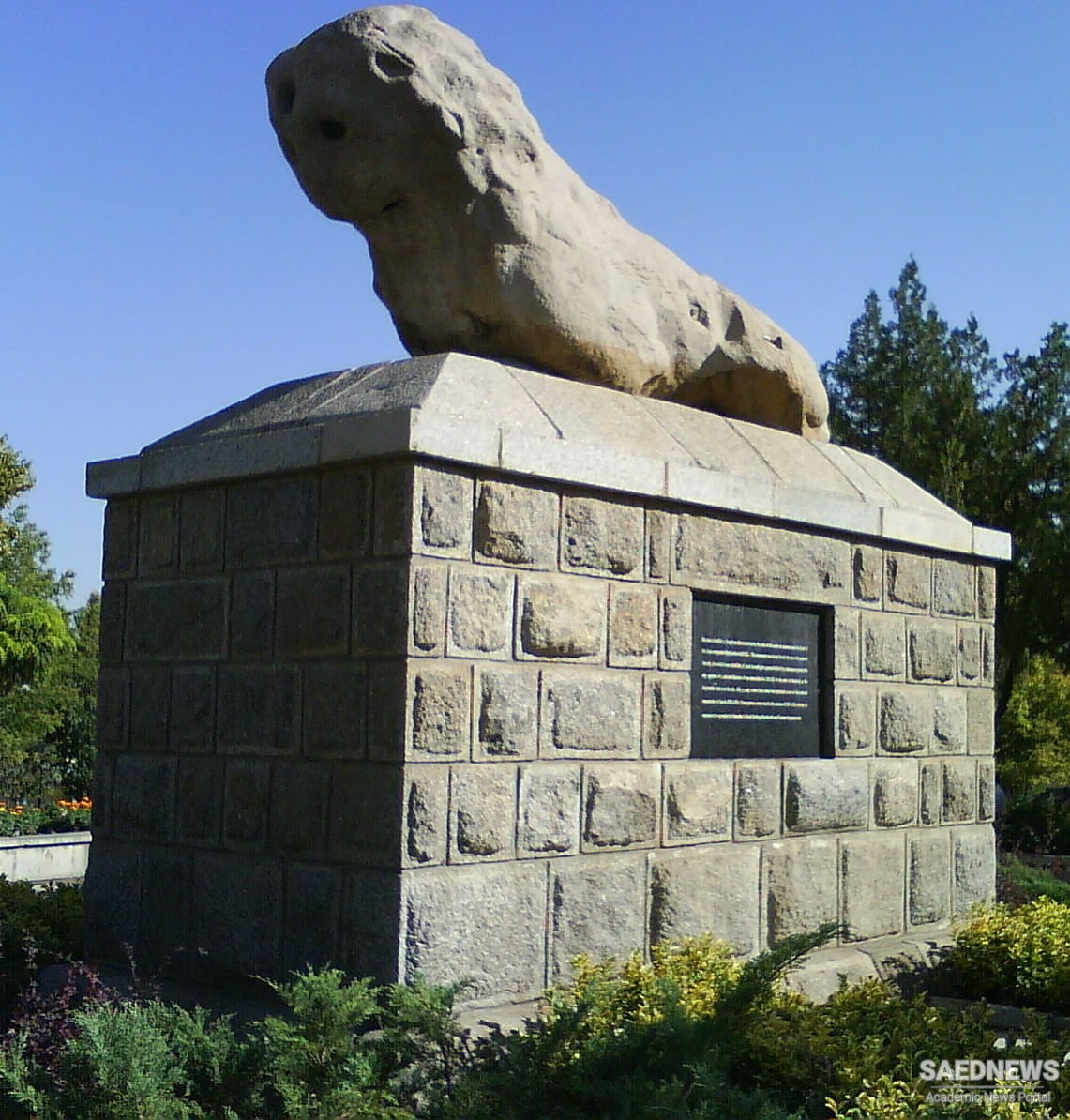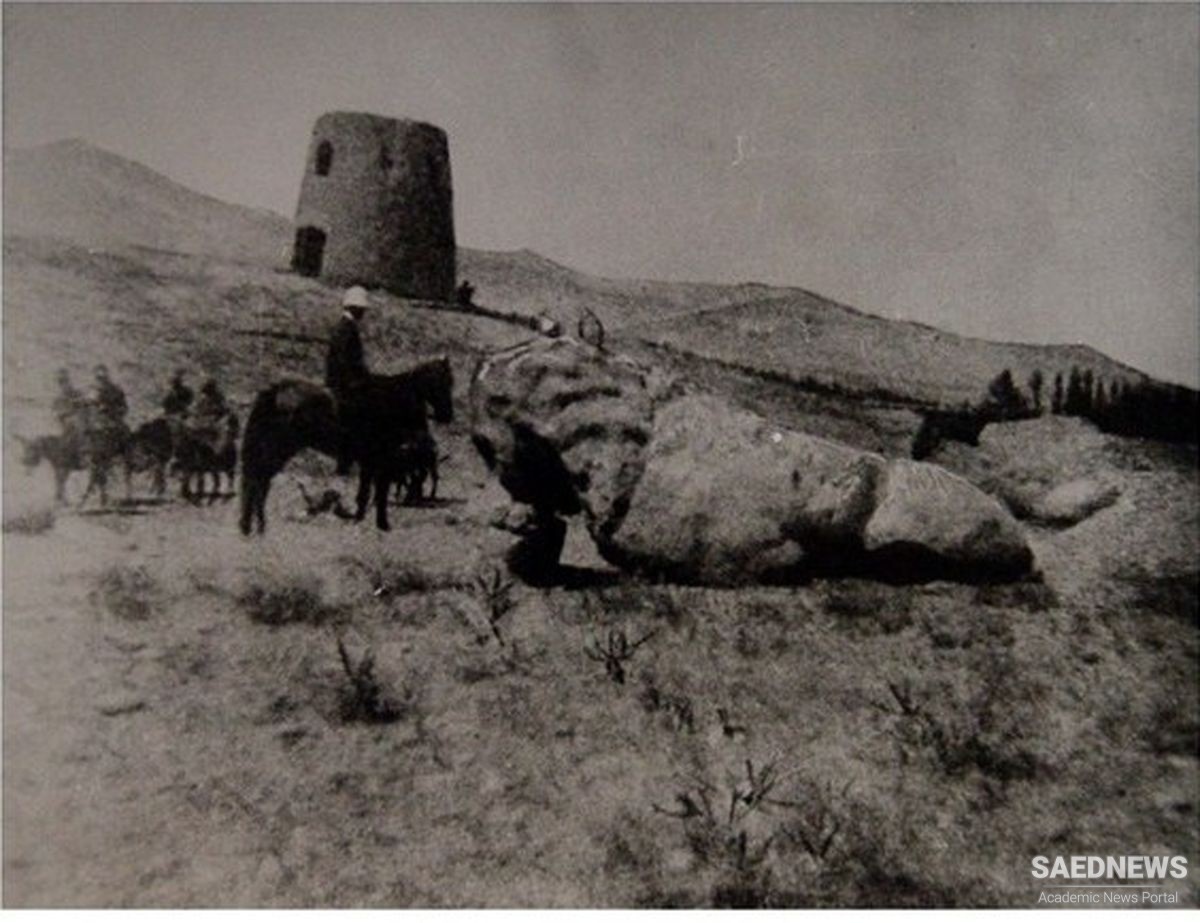The stone lion -one part of the 'Lions Gate'- sits on a hill where a Parthian era cemetery is said to have been located. When first built, this statue had a twin counterpart for which they both constituted the old gate of the city. During the Islamic conquest of Persia, the victorious Arabs referred to the gate as bâb ul-asad ("the lions gate").
The date of the statue remains in ambiguity. While some accounts denote the statue to the first Iranian dynasty, the Medes (728-550 BCE) and some to the Parthian dynasty (248 BCE-224 CE), since it was found over a mound which was a Parthian cemetery. Others believe it was commissioned by Alexander II to commemorate his male-lover and companion, Hephaestion. According to number of historical accounts Hephaestion fell sick and died in the autumn of 324 BCE when the Macedonian army was stationed in the city of Ecbatana for the winter.
The gates were demolished in 931CE as the Deylamids took over the city. Mardāvij unsuccessfully tried transporting one of the lions to Ray. Angered by the failure to move them, he ordered them to be demolished. One lion was completely destroyed, while the other had its arm broken and pulled to the ground. The half demolished lion lay on its side on the ground until 1949, when it was raised again, using a supplemental arm that was built into it.
In 1968 Heinz Luschey demonstrated that the lion is a Hellenistic sculpture and that the lion monument at Chaironeia (erected soon after 336 BC is comparable. His interpretation that it was built by the orders of Alexander the Great to commemorate the death of his close companion Hephaestion in 324 BC.is adopted by Iran's Cultural Heritage Organization.
According to the Islamic accounts, the statue is one of a pair of stone lions installed at the gate of Hamedan. The Muslim invaders named it the 'Lion Gate' after the invasion of Iran by Arabs in 7th century CE.
This statue had a twin counterpart for which they both constituted the old gate of the city. The gates were demolished in 931CE as the Daylamids took over the city. Mardavij unsuccessfully tried transporting one of the lions to Ray. Angered by the failure to move them, he ordered them to be demolished. One lion was completely destroyed, while the other had its arm broken and pulled to the ground. The half demolished lion lay on its side on the ground until 1949, when it was raised again, using a supplemental arm that was built into it.
The Stone Lion is 2.5 m long, 1.50 m wide and 2.20 m high and today, the area surrounding the statue is a city park.
There was a belief amongst the people of Hamedan long ago, and perhaps still today, that if a girl was ready to get married, she should be brought up to the lion statue along with a potion made of honey, vinegar and milk. The potion would be poured on the statue and then the girl would place a small stone on the potion. If the stone stayed on the lion it indicated that she would get married soon. Also if a woman gave birth to a baby boy they would bring the newborn to this statue and pass him under the lion’s legs for good luck. Obviously this goes back to when the lion actually had legs.



 Art of Miniature and Its Cultural Implications in Islamic Persia
Art of Miniature and Its Cultural Implications in Islamic Persia














































